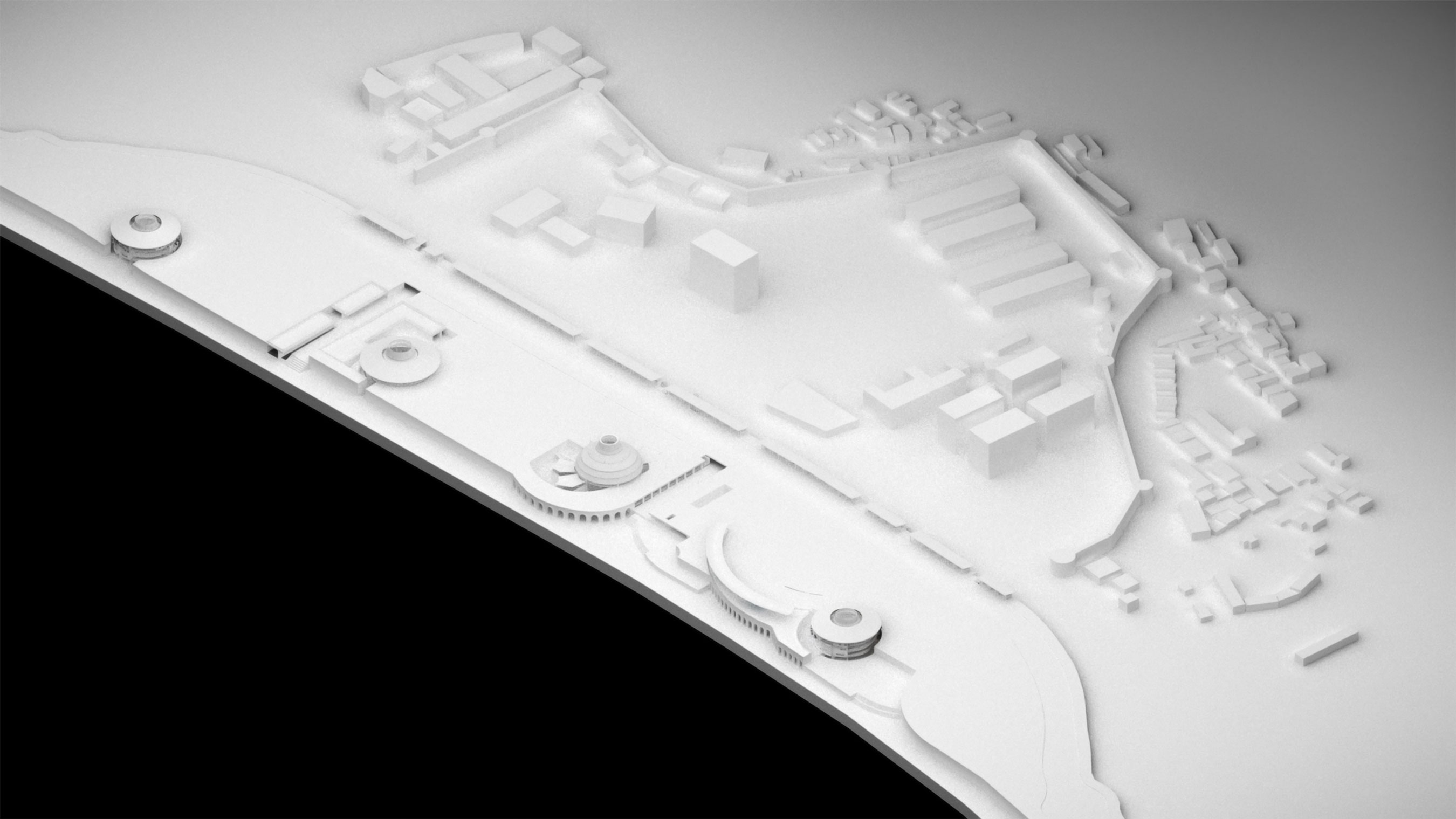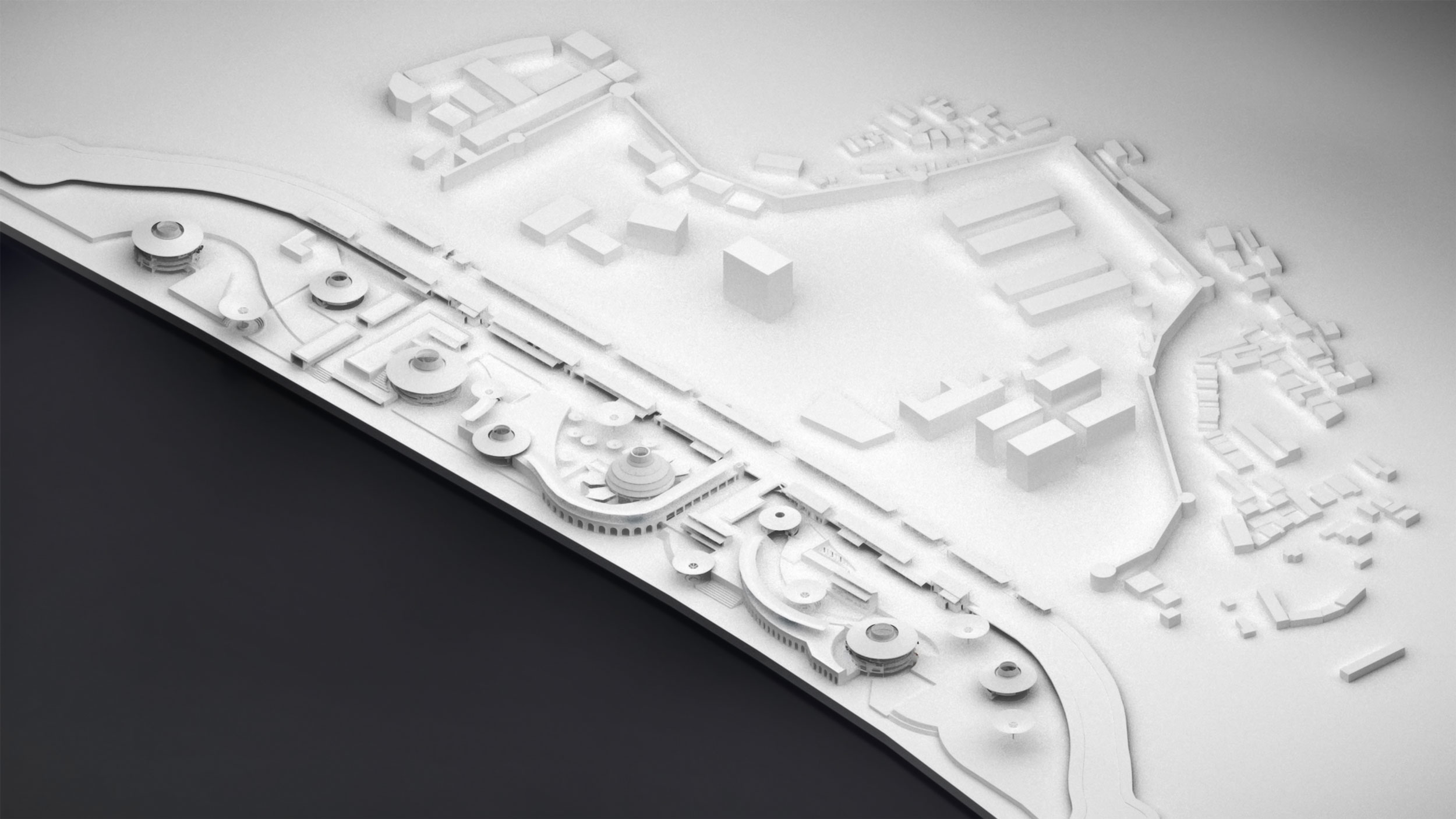

Ahmedabad is a refuge from the surrounding hot and arid landscape. The Old City Walls have been gradually eroded, with only fragments left in some places. The Sabarmati Riverfront Project (2005) is a concrete enclosure, which, although protecting the city from flood, cuts off the interconnection of the river and city. The patterns of culture and fabric-making in Ahmedabad emerge from the rhythms, flows and flux of weather and water. This rhythmic extension has been interrupted by the New Riverfront Walls.
Unlike the centralized modern textile factories in the surrounding areas, much of the fabric-making, printing and embroidering in the old city are still working in a family-based hand-craft fashion. with efficiencies compromised by limited water, drainage and transportation access. Each of these factors points to an opportunity to re-integrate the three ecologies: the environment, social relations and human subjectivity.
The New Riverfront Walls in this project now embody agencies like the existing Fabric Market between Panch-Kuwa and Sarangpur Gate on the Old City Wall. This dialogue between the old and new world opens a working relationship between the Old City and the Sabarmati River. Factories, Workshops, Dwellings and Stepwells are closely combined to form a complete water circulation system of river filtration, rainwater collection and sewage filtration. Surrounding areas benefit. The enzymatic growth of agency territories combined with the ecologically arranged water system gradually permeates into the old city and, simultaneously, activates the life of the city and the vitality of fabric craftwork.

SET Scale: Series of Enzymatic Territories Scale




The riverside project itself is growing. This sequence of growth is determined by the grading of the water's cleaning system. Dyeing factory, Fabric Printing workshop and Dwelling "big roofs" with a filtering centre will be the first construction of the trade which opens the new wall to the Sunday Market shop, a walkway to the river. The second stage includes lab, market and resting pools- "small roofs". The third phase adds a plantation of natural pigments and shops and other ancillary facilities facing the riverbank interior.



Stage 1 of Breaking the New Wall

Stage 2 of Breaking the New Wall

Stage 3 of Breaking the New Wall

FABB: Factory, Amenity, Beds and Butts
Blg Scale: Building Scale
The Rhythm of Culture and the Rhythm of Fabric Making in Ahmedabad are both based on him and the Rhythm of Season here. This link was broken by Newwall and the progress of the modern textile industry.
Unlike the innovative, centralized modern textile factories in the surrounding cities, fabric making, printing, embroidering in the old cities are all working in an outdated, family-based fashion. And because of overcrowding and high land prices in the old city, family-owned artisanal workshops often use private houses as studios. Scattered workshops lack organization and cooperation, and are limited by water access, drainage, transportation, working environment and other factors, so home workshops are in a very inefficient working mode.
Each of these factors points to an opportunity to rethinking the relationship between the fabric handicraft industry and the Sabarmati River, the relationship between the Old City and the riverfront. Re-integration of the three ecologies: the environment, social relations and human subjectivity.


